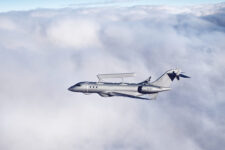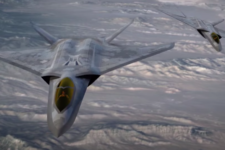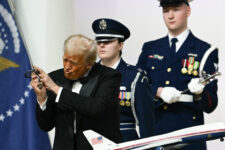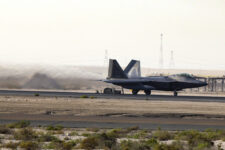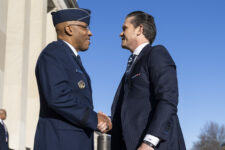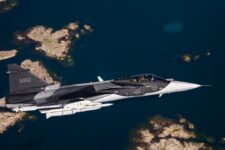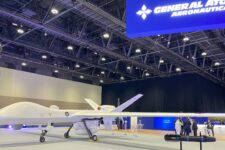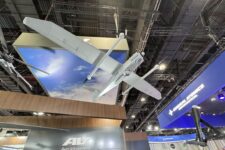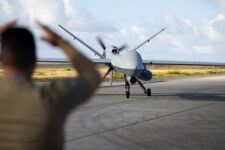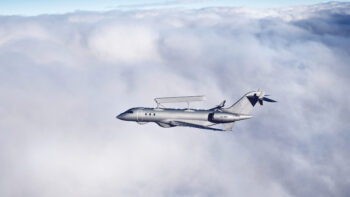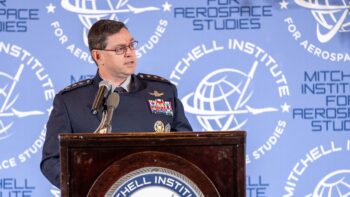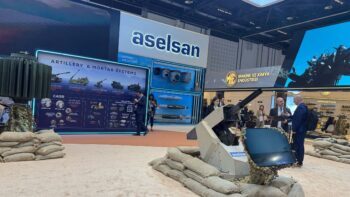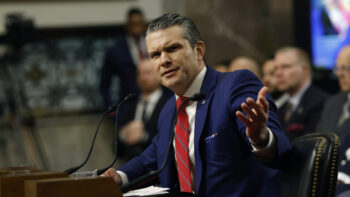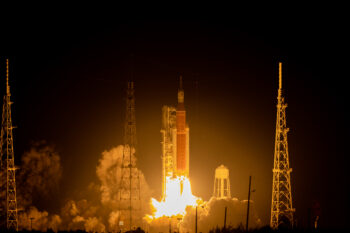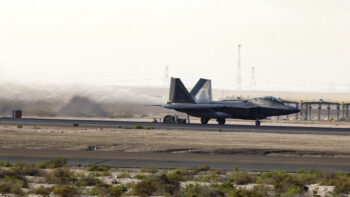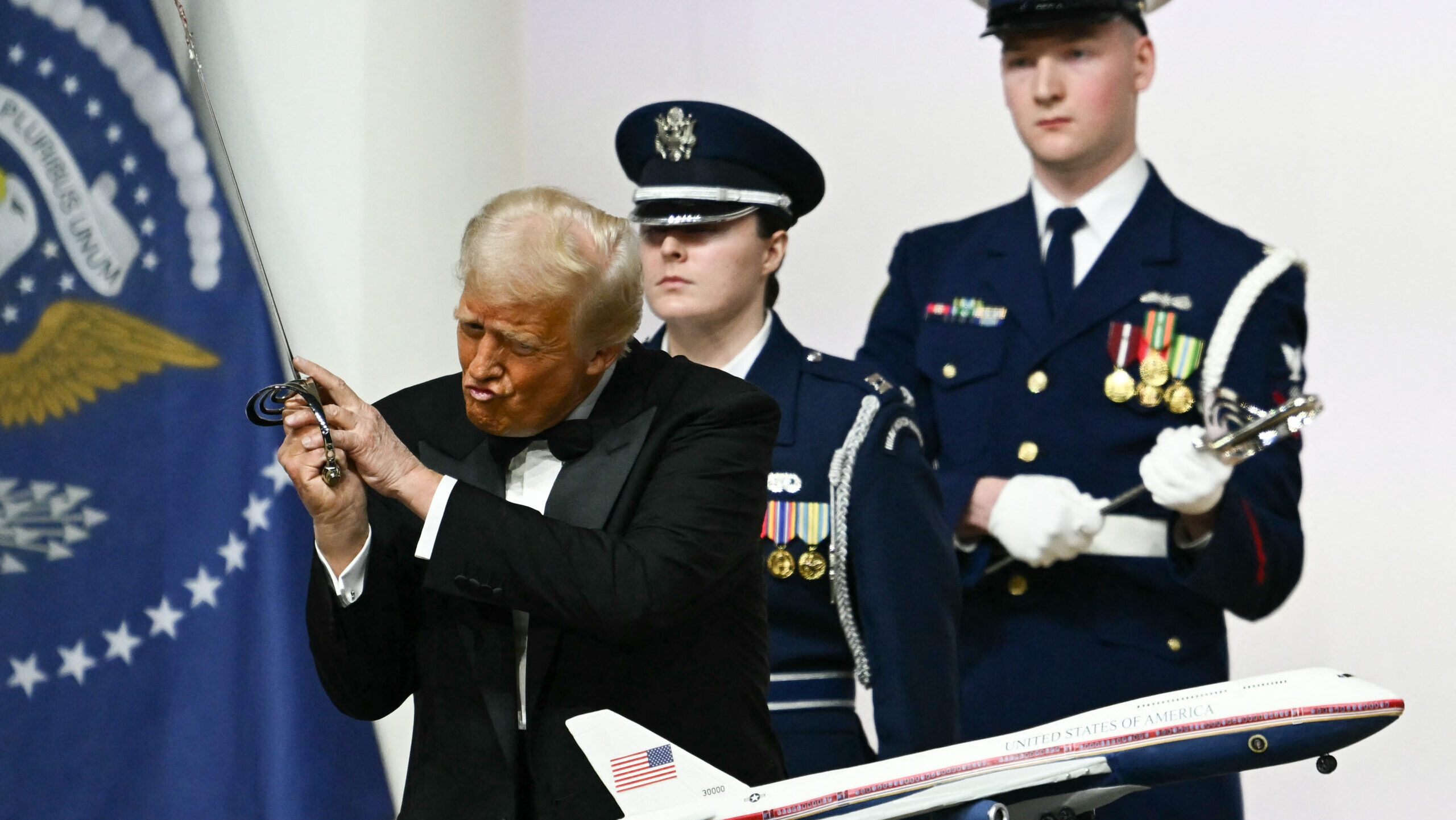
US President Donald Trump gestures with a saber after cutting into a cake representation of the new Air Force One design during the Commander-In-Chief inaugural ball at the Walter E. Washington Convention Center in Washington, DC, on January 20, 2025. (Photo by PATRICK T. FALLON/AFP via Getty Images)
WASHINGTON — Lengthy delays with the delivery of two Boeing 747 jumbo jets outfitted to serve as flying White Houses has drawn the ire of President Donald Trump, who is “clearly not happy” with the lagging schedule to deliver the planes, Boeing CEO Kelly Ortberg said today.
“I think he’s made that well-known,” Ortberg said during the Barclays Industrial Select Conference, referring to the commander-in-chief’s widely publicized dissatisfaction with Boeing’s management of the Air Force One program.
The two jets, dubbed VC-25B, are set to replace older 747 models currently in service that regularly shuttle the US president around the globe. Trump personally intervened in the contract negotiations for the deal in 2018, and the ensuing work to modify the planes with features like a secure communications suite and the ability to survive a nuclear detonation has proven difficult for the beleaguered aerospace giant.
Amid other woes like workforce disruptions and a fixed-price development contract that has forced Boeing to lose billions of dollars on the Air Force One program, delays have piled up, and now the first of the two planes may not deliver until 2029 or even later, Breaking Defense previously reported. The first jet was originally expected to be handed over in 2024.
An updated schedule assessment from Boeing is anticipated in the spring. To help speed things up, Department of Government Efficiency (DOGE) chief Elon Musk has now been tapped to intervene, a move Ortberg said he welcomed.
“Elon Musk is actually helping us a lot in working through the requirements on VC-25 to try to help us get the things that are non-value added constraints out of the way, so that we can move faster and get the president those airplanes delivered,” Ortberg said.
“He’s a brilliant guy, so he’s able to pretty quickly ascertain the difference between technical requirements and things that we can move out of the way, and he’s helping us in a big way,” he continued. “So I’m embracing that, working with the DOGE team to help us improve the delivery.”
Noting that an accelerated schedule can help reduce the risk of further cost overruns, Ortberg concluded that he is “all in on trying to pull these airplanes up and get the president his airplanes delivered to him, which is what he wants.”
Vexed by the schedule setbacks, Trump has openly mused about finding alternatives, telling reporters flying aboard Air Force One on Wednesday that he was considering buying other used Boeing aircraft from a foreign seller. It’s not clear how that plan might work to potentially save time, as any other jets will need to be acquired and retrofitted similar to the work Boeing is doing. But other companies could theoretically compete for such a deal: In April 2024, the Air Force awarded the mid-size firm SNC a contract worth $13 billion to convert used 747s into the service’s next fleet of “Doomsday” planes.
Saab CEO floats Euro defense ‘coalition,’ plans to fly unmanned combat demonstrator
“We should sort of understand that we need to do more in Europe, nation by nation, of course, but also as part of the alliance, being a strong pillar in NATO” said Saab CEO Micael Johansson.
